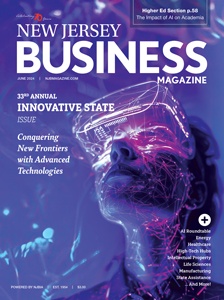
Make a Midyear Economic Pit Stop
By Peter Dontas, EVP, Commercial Banking Market Executive, NJ, Wells Fargo On Jun 4, 2024Many business owners nationwide held their collective breath throughout 2023, anticipating the crash of the economy’s much-discussed “hard landing.”
Except, it never happened.
As 2024 began, hope for a “soft landing” emerged, and a rosy outlook blossomed. And according to the seers of all things Fed-related, 2024 was certain to produce a bumper crop of interest rate cuts – three of them.
Except, those too have not materialized yet.
Then in March, the U.S. Bureau of Labor released Consumer Price Index (CPI) data, pinning inflation at 3.5%. That led the Fed to yellow-flag interest rates and reduce the expected number of 2024 rate cuts to one. While economic optimism has not faded entirely, the reality that a higher interest rate environment might be the new “business as usual” is gaining currency.
So, as U.S. business owners shift their mindset to the new normal of a federal funds rate at 5.25% to 5.5%, many are reevaluating what “good” business results for the year could look like.
As a commercial banker who has watched the ups and downs of interest rates for over 30 years, my advice for businesses is this: midyear is the exact right time to make a pit stop. Pull over and consider what good business practices and strategies are for the remaining laps of the year. Also, pause to think about what better practices and strategies could be, and what best practices might look like.
While each business has its own unique origin story – from a desk in the garage to seed capital – almost all businesses share the same goal of growth. Choosing the right strategy that will take your business to the next level is key.
Here is my guide to good, better, and best business practices for remainder of 2024:
Good: It is good to be aware of your industry’s economic environment and how it is, and could be, impacting your business. Recognizing how interest rate changes might alter your borrowing strategy, and the cost of capital, is crucial for balance-sheet management. Shifting labor and material costs could influence decisions about project timelines and inventory. Being aware of your business climate will help you make choices with a clear understanding of potential business implications.
Better: While it is good to be aware of the economic impacts to your business, it is even better to be aware of your industry’s environment while making investments in your business that can reduce costs and improve efficiency.
Businesses hesitate committing to new processes — from machine learning to e-commerce — because of the up-front investment. While being careful is wise, its equally important to acknowledge the opportunity cost of foregoing innovation.
According to a 2023 survey of 906 automation executives in North America and Europe conducted by Bain & Company[1], the growth and revenue gap between those companies that chose to invest heavily in automation versus those who chose not to has, and will continue, to widen.
In addition to creating expansion and development opportunities, investment in treasury automation, which decreases the use of paper instruments, can further reduce fraud risk. (According to U.S. Department of Treasury[2], fraud has skyrocketed 385% since COVID-19.)
Infusing treasury management services with the latest technology may not only improve efficiency but could also reduce accounts receivables hiccups and payment delays.
Best: While it is good to be aware of your economic environment and better to add efficiency/technology investments at the same time, it is best to execute both of those practices while also forming a team of trusted advisors to help identify strategic growth opportunities.
It is critical that business owners develop and maintain relationships with a team of advisors (lawyer, accountant, banker). This council will help provide insight, review efficiencies, and advocate for regular stress-testing to help you deploy the correct tactics to meet company objectives, despite economic variables.
These consultants should also be vigilant about succession planning and assessing transition strategies for your business, so whenever you decide to change roles your business remains well positioned.
Yet, as important as advisors are in curating long-term planning, it is also important to remember that even their roles as advisors require regular review. Business owners’ needs are constantly changing, so it is critical these relationships either evolve to meet company needs or be reconsidered. Being conscientious of the limitations of certain relationships is part of growth.
Running a business is hard. But you do not have to do it alone.
To access more business news, visit NJB News Now.
Related Articles:





